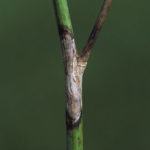Clubroot has made its presence known in the far northwest of Saskatchewan’s canola-growing region, with the discovery of a “heavily infested” field. SaskCanola on Monday reported the discovery of the disease in a field in crop district 9B, but didn’t give its specific location. District 9B is a group of 16 rural municipalities east of












